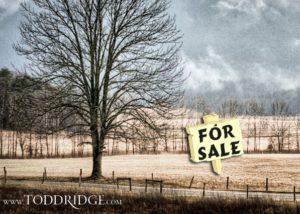 The other day I had a conversation about ‘pricing your art’ with my friend, fine art photographer Todd Ridge. Todd is a success in the art print market, so I asked him to contribute a paragraph with some tips for pricing art and prints for an upcoming post that I have been planning.
The other day I had a conversation about ‘pricing your art’ with my friend, fine art photographer Todd Ridge. Todd is a success in the art print market, so I asked him to contribute a paragraph with some tips for pricing art and prints for an upcoming post that I have been planning.
However, Todd’s little paragraph turned into a whole guest article that is filled with some unusual insight and art pricing considerations. My ‘art pricing’ post will have to wait a little bit longer… ~Lori
Guest author/artist: Todd Ridge
Pricing your art isn’t as daunting as you may think. If you’re starting out, don’t overprice your work. Take a look around you and see what other similar artists are selling their work for. Don’t under price your work either, and be sure to factor in your materials, equipment, time and other miscellaneous expenses.
Here is a breakdown of a recent trip and what it takes to break even. I was in a spontaneous mood one Saturday afternoon so… I drove my family to the Great Smokey Mountains for an overnight stay / photographic expedition.
Here is what those monetary expense look like:
- Lodging – $90
- Gas – $150
- Food – $50
What about your time? WAIT….. you mean I have to charge for my time? Absolutely! So what is your time worth? $50 per hour? $100 per hour?
I have to always keep in mind the time it takes me to drive somewhere to take the photo, the time it takes to process the photo and the time it takes to market that photo. When you look at it that way, our little trip to the mountains eats up time and money pretty quickly. What happens if you don’t get a marketable image? Hopefully you’ll have great family memories and a few family “funny faces” images you’ll cherish for years to come.
So what does my time look like for our trip to the mountains?
- Drive time – 6 hours
- Time spent taking photos – 4 hours
- Time spent sorting images and making final selection – 8 hours
- Time spent creating art – 4 hours
- Time spent marketing your art – ???
- Time spent learning your craft – XX years
Total time spent for new series = 22 hours multiply that by your hourly rate. Add in expenses, factor in equipment cost, and how long it took to learn your craft. You will quickly realize that it takes a lot to create art and if you’re trying to earn a full time living at this then your return needs to be pretty good.
Camera gear isn’t cheap, hiking boots aren’t cheap (yes, hiking boots are part of my equipment), kids aren’t cheap…no wait that’s not part of your art expenses. However, t-shirts and camo shorts are very affordable. 🙂
Now if I am selling a 24×36 print for $225 and my material cost is $40, I’ll still need to add in the time and expense. That is assuming the art is marketable and people actually want to hang it in their home or office. My posters typically sell for $25 for a 12×36 panoramic and $45 for a 24×36. This price is pretty common for those sizes.
My art publisher, Winn Devon determined that is what the market is willing to pay. I make a royalty fee from selling my posters. Your percentage may be smaller from royalties, but the exposure and experience you gain from working with a top art publisher far outweighs any downside.
If you’re selling your work on places like Etsy, browse styles similar to your own and see how well they are doing.
Here are some questions to ask yourself:
- How long have they been a member?
- How many prints have they sold in that time?
- What kind of feedback have they received from past customers?
- How much are they charging for shipping?
- How are they marketing their work? (product description, discounts, etc.)
Always remember to look at the big picture and the amount of time and money it will take for you to turn a profit on your art. When all is else fails, go with your gut instinct.
 Todd Ridge is a landscape photographer with a deep appreciation and love for the simple, pure beauty of the natural world around us. His posters and prints are sold worldwide and his wife is really hot (he sure thinks so). You can connect with Todd online at www.ToddRidge.com or www.twitter.com/toddridge or www.facebook.com/ToddRidgeArt
Todd Ridge is a landscape photographer with a deep appreciation and love for the simple, pure beauty of the natural world around us. His posters and prints are sold worldwide and his wife is really hot (he sure thinks so). You can connect with Todd online at www.ToddRidge.com or www.twitter.com/toddridge or www.facebook.com/ToddRidgeArt
*****
Here are a few articles you might find helpful:
Top 10 Ways Artists Make Money
Marketing Your Digital Art: To Watermark or Not
Does Money Relate to Your Artist’s Lifestyle?
Helpful Ways to Negotiate and Set Your Art Prices
How to Stage Your First Art Exhibition
Let’s meet on Twitter, Facebook and now on Google Plus! http://gplus.to/lorimcnee …and if you want to see my own paintings, please visit LoriMcNee.com ~Lori








I think a conversation about pricing art is interesting. It has been difficult for me in the beginning and I made my mind as follow :
Materials : The canvas , brushes and paint. There’s mention on authentic certificate. I always paint on Lin canvas with Fine oil Lefranc et Bourgeois with Raphaël brushes. The caves are always old shape P 2 to 20 or more.
Trips : Some paintings are made at home, some other in other places, but according to an average I decided a price of 15 € by point. By example a 4P is a 33 cms x 22 cms and I sell it 60 €.
Now i have a lower price for cotton canvas
What do you think about a price by point, and stick to it.
Excuse my words, I’m french and English isn’t my native tongue !
Pricing is always a difficult task! In fact, I just had to do it today. Yes, price per point makes sense and it is easier for your customer to understand. I am planning to write another post on this subject in the near future. Thank you for the visit and you did great with English. I wish I could speak French.
Best-
Lori
Lori, I have been asked the “how long” question for years. On several occasions I’ve tried to record how long I stay at the easel on a particular painting but it has never worked for me. I have never followed through as I’m too involved in the process to worry about the time, or I forget to check the clock. Your answer is a better one – a creative lifetime. Happy painting and thanks.
Lori, Thank you for this article! Pricing has always been what holds me back from selling my artwork.
Amanda, it is still a challenge to me! Putting a price on art is not easy. I am glad this post helped.